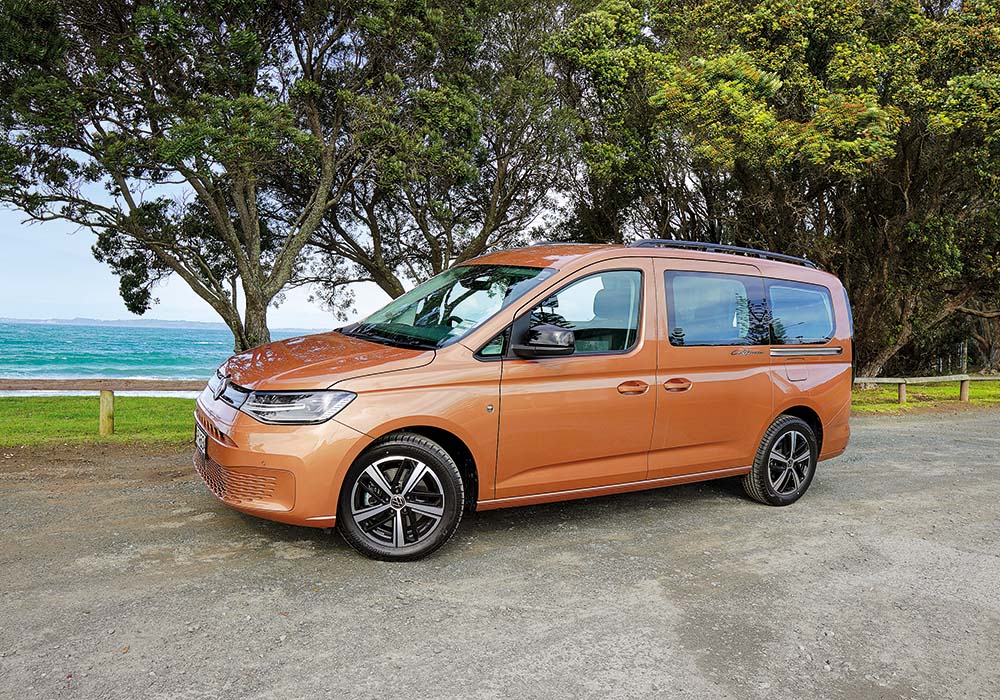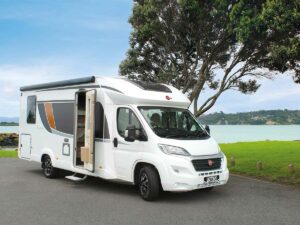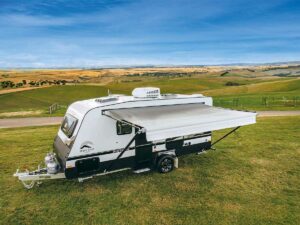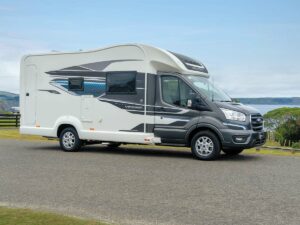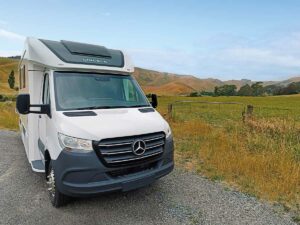Meet the camping car: an everyday van that doubles as a motorhome when needed. Paul Owen checks out a recent model.
The ‘camping car’ concept has long been popular in Europe, and every big event there attracts large numbers of ordinary-looking vehicles that can also perform as mobile hotels. The Tour de France is a case in point. You’ll witness thousands of European cycling fans camping in these vans by the side of the road, waiting sometimes for days for the race to come along.
Usually, camping cars are products of their owners’ ingenuity. The starting point is often a compact car-based van, preferably with one or two sliding side doors and a tailgate, to which homemade beds and kitchen facilities are added. The results are rudimentary, but provide cheap, short-term accommodation or a handy picnic station at the weekends.
Why don’t these folks simply buy a campervan or motorhome instead? A prime reason is cost. If you can’t afford a motorhome in Europe, you probably also can’t afford a permanent place to park it. The camping car can be left out on the street, parked adjacent to an apartment, which is where owners typically live.
The camping car is also the main vehicle for most owners, who need it for daily activities such as commuting, shopping trips and school runs. It must therefore be easy to park, use fuel sparingly, and have family-capable seating and multi-role versatility. In short, these are the most practical motorhomes for those who only want to own one vehicle. They’ll perform like an ordinary station wagon for 300 days a year, and offer an acceptable compromise as touring accommodation on the other 56.
The vast majority of camping cars are conversions, the work done either by the owner or a small number of low-volume specialists. There hasn’t been much opportunity to buy one from the factory that made the rest of the vehicle until now. Enter the new Volkswagen Caddy California.
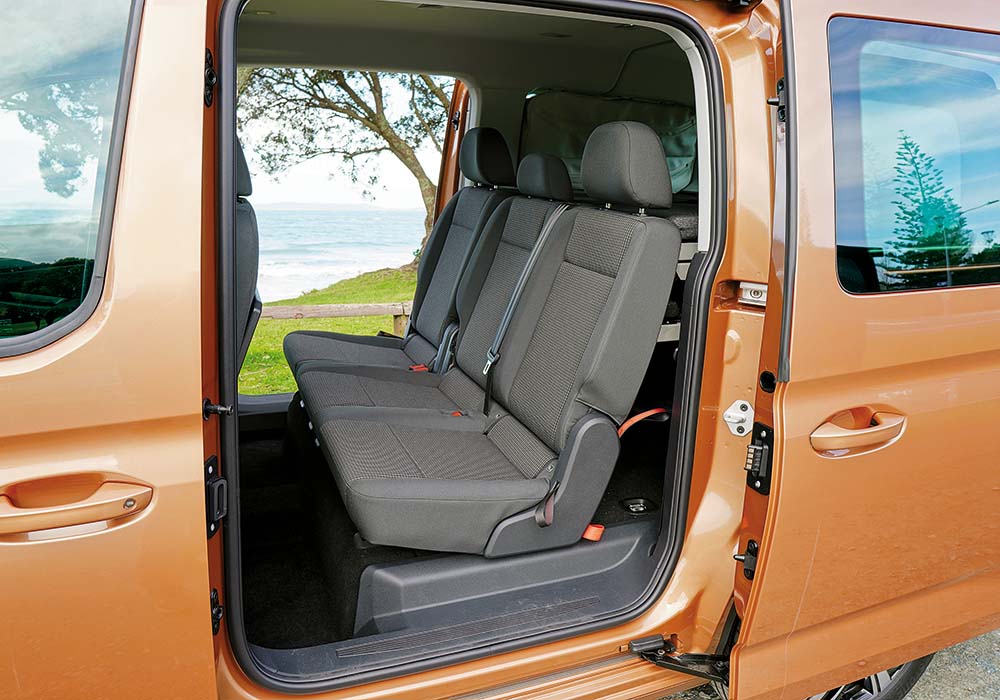
Caddy joins the California family
The California version of the Caddy compact van range is a natural progression for Volkswagen. For decades, it has produced the popular California, a medium-sized campervan based on the Transporter van that’s long been lauded for its attention to detail. That original California is something of a cult vehicle for the way it balances everyday usefulness with a decent serving of camping comfort, especially in Europe.
In 2020, Volkswagen took the larger Crafter van and created the Grand California. This eschewed some of the original Cali’s usability in return for a more luxurious camping experience, including, finally, a proper wetroom and toilet. Now, two years later Volkswagen has completed a trifecta. The Caddy California tips the balance even more in favour of daily use over touring comfort than the original California.
For those who think less is always more, your ultimate Volkswagen campervan is here. You certainly will pay quite a bit less. The Caddy costs $65,500, compared to $147,000 for a California and $159,000 for the most affordable of two Grand California models.
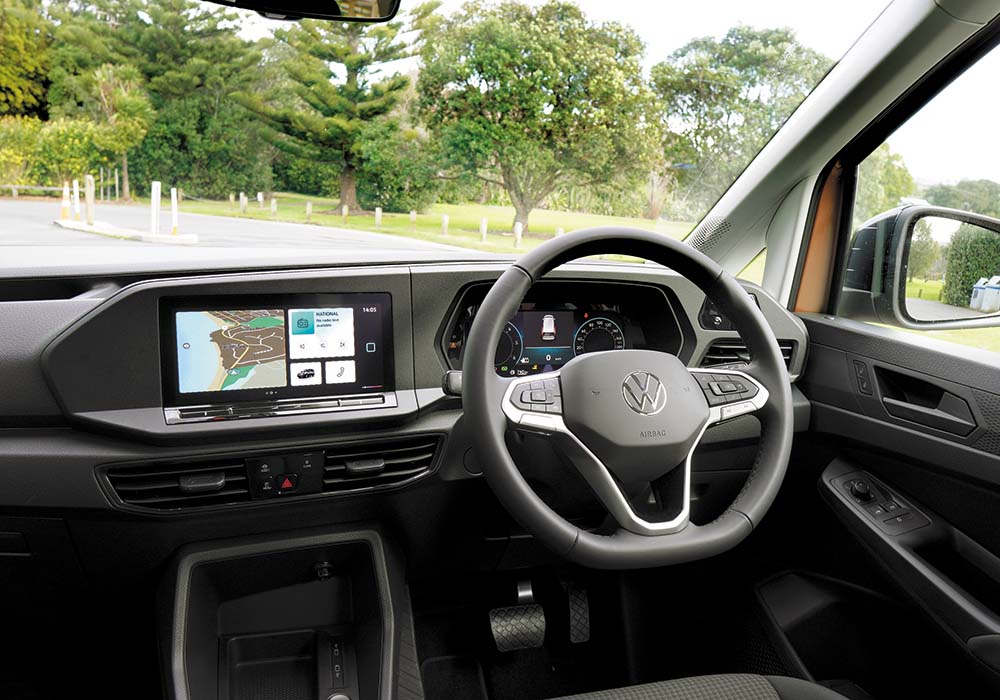
Versatile platform
A Golf is essentially what you get when you buy a Caddy, whether it’s the California, the wheelchair-friendly Mobility version, or the hard-working, bare-bones Cargo. The popular Golf is now in its eighth generation and provides most of the hardware and software for this newly released, fifth generation of the Caddy.
The starting point is Volkswagen’s MQB platform, which is also the foundation for the Audi A3, Audi Q2 and Q3, Skoda Octavia, and many others in the VW Group family. It has high structural integrity, giving the steering and suspension a solid mounting point. Doors close with vault-like precision in MQB-equipped cars, the steering feels precise and responsive, and there’s a welcome reduction in wind and road noise when travelling at highway speeds.
Safety features
Following on from the Golf VIII means the Caddy V gets improved electric power steering with Active Lane Assist – one of no less than 18 safety systems in the latest generation. Other notables include Adaptive Cruise Control, which detects other vehicles ahead in the same lane and adjusts your speed accordingly. Front Assist detects pedestrians, other vehicles, and cyclists at speeds below 52kmh, and can automatically bring the Caddy to a complete stop. Missing from the test vehicle was any Blind Spot Monitoring system, an unusual omission from what is otherwise a comprehensive suite of safety aids.
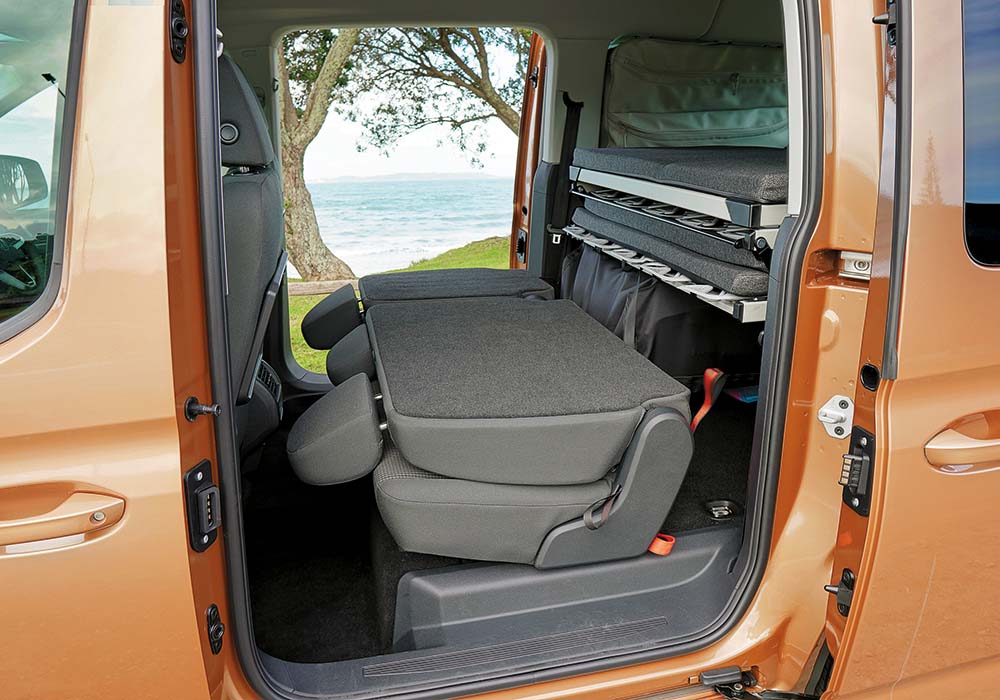

Engine
An all-new 2L diesel engine drives the front wheels via a 7-speed DSG gearbox in the New Zealand version of the Caddy. The DSG is a smooth and responsive shifter of ratios when used as an automatic, and the twin-clutch design ensures it is less wasteful of energy than a conventional automatic. Expect the smallest California to sip at a rate of around 6.5L per 100km when cruising, a considerable saving over its larger siblings.
The new Caddy isn’t just more caring of the environment when it comes to fuel use. There’s a new ‘twin dosing’ system for the Adblue emission control. Volkswagen says that this results in more precise urea injections that are optimised for a wide range of speeds, reducing toxic nitrous oxide emissions by 80 per cent.
On the inside
The higher, longer Caddy body lords it over the Golf when it comes to the size of the interior. There’s nearly four cubic metres of space behind the front seats, and there would have been even more if the centre console allowed a walk-through aisle and rotating front seats.
Perhaps the Caddy’s greatest limitation in the campervan market is that you can’t turn the front seats around. So there’s no opportunity for front and rear seat occupants to face each other when parked up and the weather has taken a turn for the worse. Perhaps it’s best to think of the cost-saving at such times, and use some of those funds to book accommodation to wait out the storm.
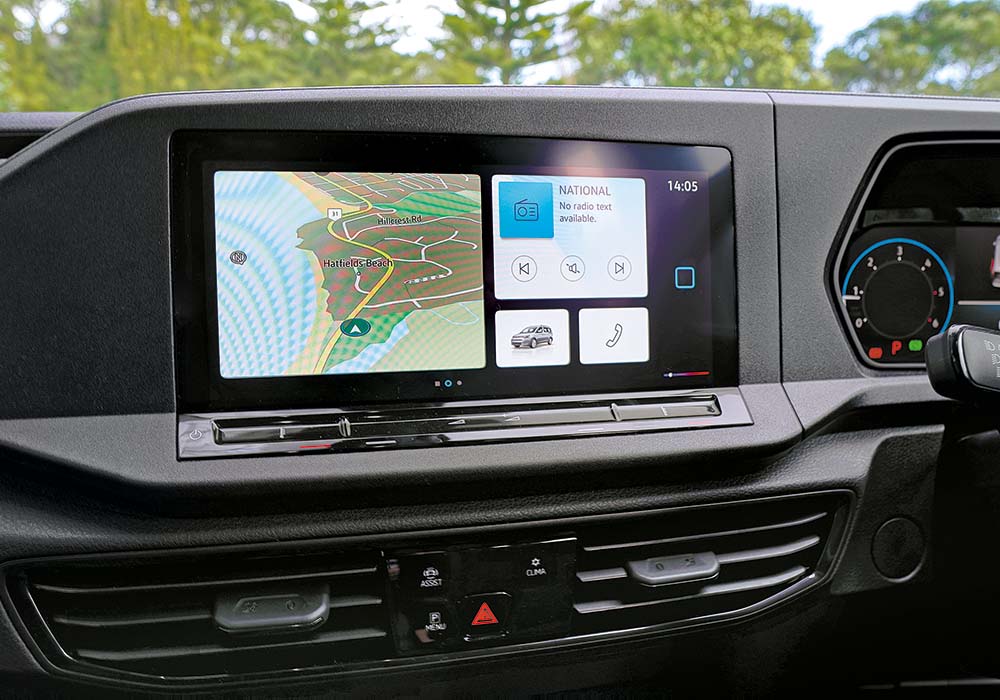
Good for fine days
The Caddy is really only a fair-weather camper in its present form. Volkswagen NZ’s website mentions that included in the price is a large, free-standing tent that mounts on the raised tailgate, but Covid-19 supply constraints have paused production of the tent for now. It should be available in late 2022 however. The extra canvas room at the back could make the Caddy a more authentic California.
However, when the sun is shining the Caddy California can make the most of it. The raised tailgate can give shelter and shade, and the sliding doors on either side give adequate interior ventilation, along with the plastic slide vents that you can lock into the front windows. The twin camp chairs and folding table are the same high-quality setting found in more expensive Californias.
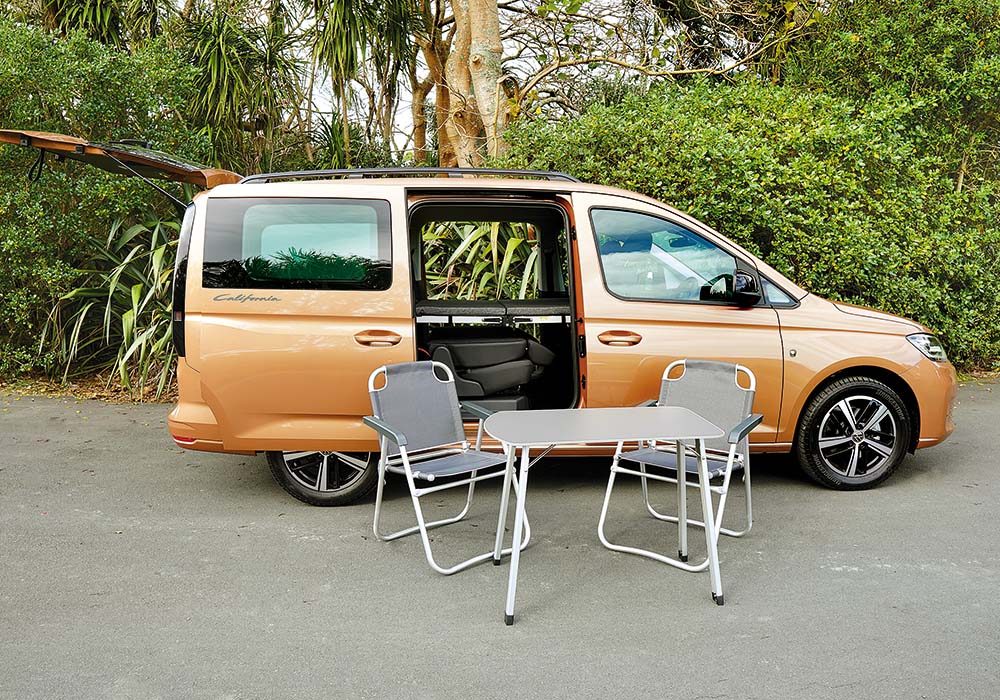
Cooking options
Also AWOL is the optional sliding kitchenette found at the rear on Euro-market Caddy California models. This consists of a pull-out metal drawer containing a single gas-hob and a chopping bench, while a lower drawer provides cutlery and pan storage. Evidently New Zealand gas regulations wouldn’t allow the kitchenette to be offered here. However, a locally sourced kitchenette will be available as an optional extra.
Not that it matters, for there’s more storage room beneath the bed of the New Zealand edition. Kiwi owners can choose to bring their own camp cooker and electric chilly bin and still have plenty of room for luggage, especially if the rear seats have been removed and left back at home.
Bed set-up
Erecting the folding double bed of the Caddy California is quick and easy, helped by the lightweight aluminum frame. Then you fold down the rear seats and slide the front seats as far forward as possible. The frame is then folded half out so that two struts can be pulled out, ready for slotting into the B-pillar of the Volkswagen. You then pull the front section of the bed forward so that those two struts reach their resting places. The result is a sturdy, comfy place for two to sleep for the night, the foam mattress suspended on sprung plastic cups, as with the beds in other Californias. At 1970mm long and 1070mm wide, the bed can accommodate most couples.
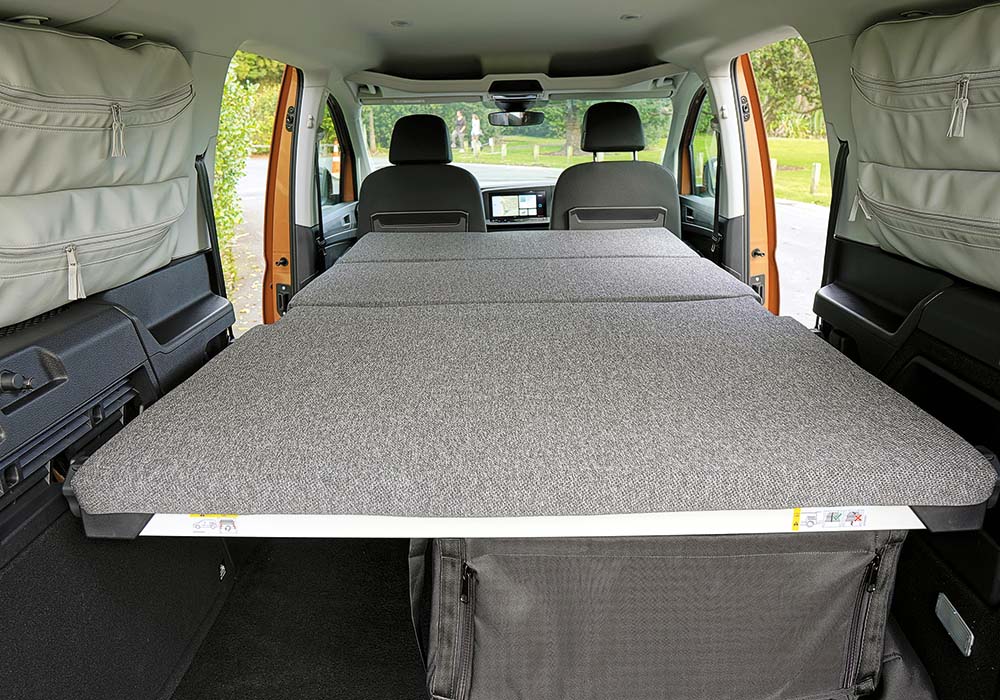
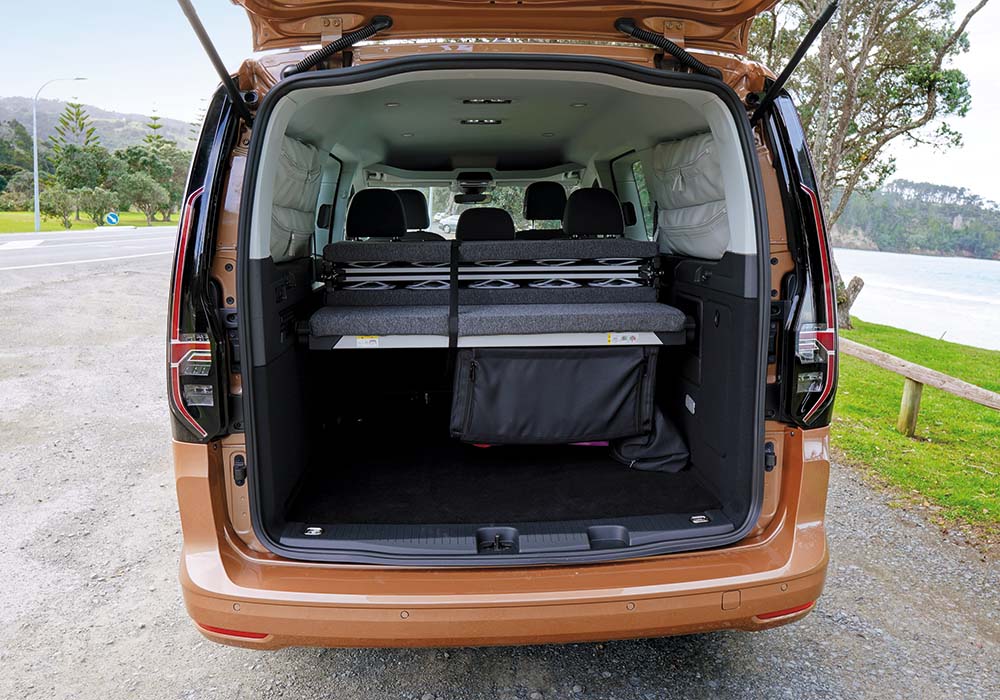
Summary
The Caddy California might be more of a car than a camper, but you can still get a comfortable night’s sleep when parked up somewhere scenic and remote. For a tester who spent one teenage summer sleeping in the back of a former funeral hearse while touring New Zealand’s surfing breaks, and his wife, who once tucked herself up in a tiny Citroen 2CV van while roaming Europe, we felt that the Caddy was quite an upgrade on ‘camping car’ options.
Pros
- Affordable everyday usefulness
- Safety Plus driving aids
- Swanky 10″ touchscreen
Cons
- Covid supply constraints mean the tailgate tent won’t be available until late 2022
- Front seats can’t about-face
Volkswagen Caddy California Specifications
| Make & Model |
Caddy California |
| Engine |
2L turbo-diesel, 120bhp/320Nm |
|
Gearbox |
7-speed DSG automatic |
|
Berths |
2 |
|
Length/width/height |
4501mm/2080mm/1650mm |
|
Water: Fresh/grey |
N/A |
|
GVW |
2326kg |
Price as reviewed: $65,500
Find out more at volkswagen.co.nz

